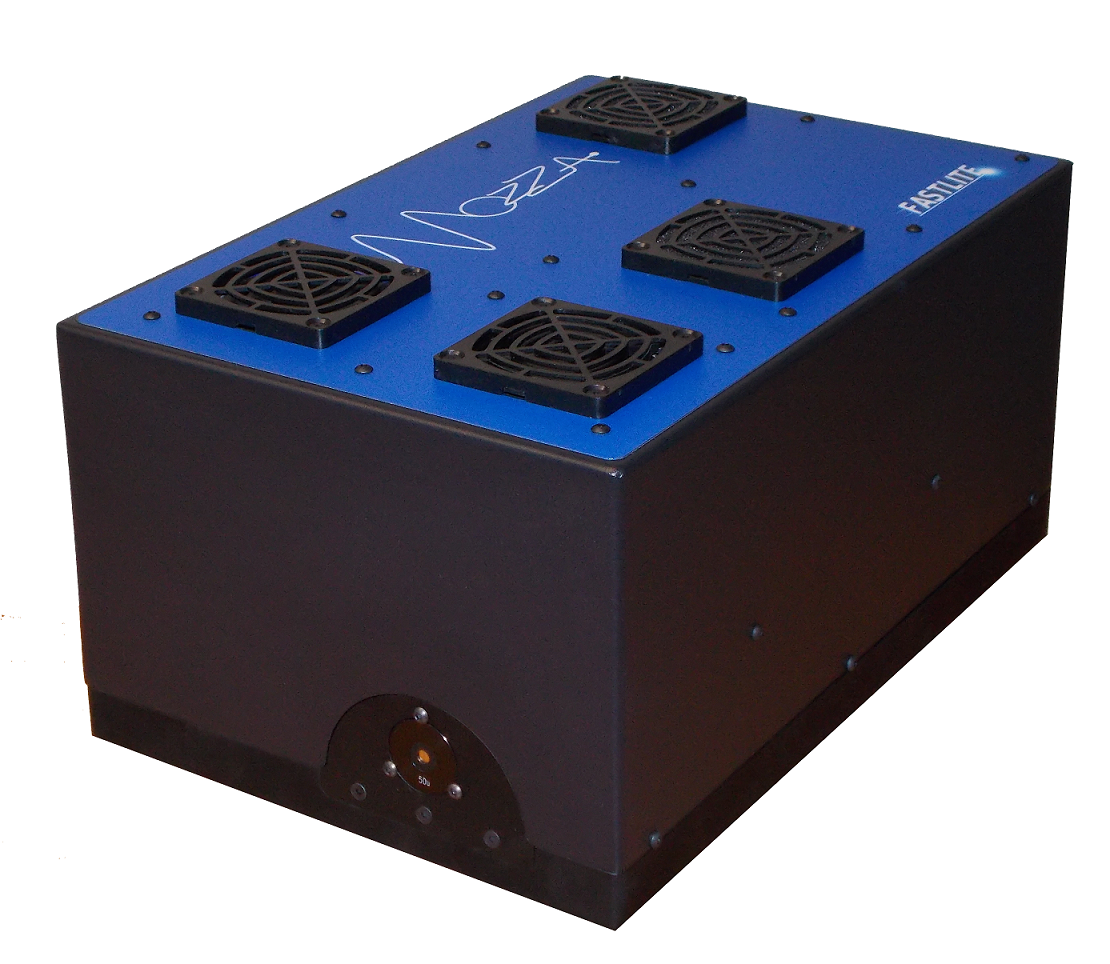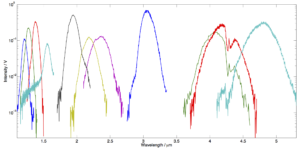
Mozza
Multi-Octave Spectrum Analyzer dedicated to pulsed IR laser sources
Mozza MIR spectrometers are ideal for spectral characterization of IR pulsed laser sources with repetition rates from few Hz to multi-kHz.
Without any moving part, Mozza unique design allows high speed scanning, synchronized with the laser. As a result, real time spectrum display is possible even with kHz-rate light sources.
While scanning FTIRs rely on mechanical delay lines, featuring issues (synchronization, artefacts) with broadband pulsed sources, Mozza MIR spectrometer is based on an acousto-optic interaction, ideally suited to triggered sources: For each trigger event, a single acoustic frequency is generated and diffracts a corresponding single optical frequency, which intensity is recorded on a photodiode. The Mozza system then scans, at each trigger event, acoustic frequencies and reconstruct the broadband optical spectrum.
The scan speed depends on the source bandwidth characteristics. As an example, a 500cm1 source bandwidth will be displayed in real time in typically 200ms for a kHz rep rate source. For a 10kHz source, the same 500cm1 bandwidth will be displayed in less than 20ms.
This makes the Mozza the ideal tool to characterize low repetition rate up to 30kHz rate pulsed IR sources.
The acousto-optic device, optics and detectors are factory aligned and calibrated. No need to replace any part when changing the wavelength, the Mozza is a real plug & play MIR spectrometer, aligned within few minutes only.
The unique ability of the Mozza to measure the output spectra of sub-10s of kHz IR sources, makes it an essential tool for the characterization of:
![]() Femtosecond pumped Optical Parametric Amplifiers (OPA) and subsequent Difference Frequency Generation (DFG) modules
Femtosecond pumped Optical Parametric Amplifiers (OPA) and subsequent Difference Frequency Generation (DFG) modules
![]() Optical Parametric Chirped Pulse Amplifiers (OPCPA) such as Fastlite high flux MIR OPCPA
Optical Parametric Chirped Pulse Amplifiers (OPCPA) such as Fastlite high flux MIR OPCPA
![]() Super-Continuum sources
Super-Continuum sources
Mozza MIR spectrometer is also perfectly adapted to the measurement of femtosecond oscillators (Ytterbium, Thulium, Chromium)
Measurement of signal (1.1-1.6µm), idler (1.6-2.6µm) and DFG (above 2.7µm) output from a TOPAS HE (courtesy of PSI Viligen, Pr. Hauri)

For a list of user publications, click here.

